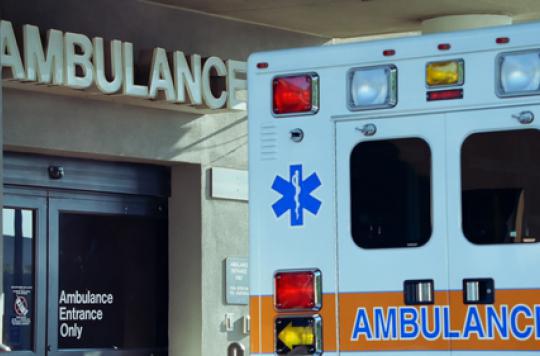Management in the emergency department lasts less than two hours for half of the patients, except those who have stayed in a short-term hospitalization unit, whose stay is longer.

In an IFOP (1) survey for Générale de Santé (2) published in May, more than one in two French people (58%) considered that the reasonable waiting time in an emergency department should be less than 30 minutes. But in fact, two-thirds (68%) of French people who had attended an emergency department in the past five years said they had waited more than 30 minutes. So, a question arises, how long have these people waited in the emergency halls?
Management in the emergency department lasts less than two hours for half of the patients, except those who have stayed in a short-term hospitalization unit (UHCD) whose stay is longer, summarizes a study by Drees (3) published this week. Wednesday. Results from a national survey of 52,000 patients.
76% of emergency room patients go home
Moreover, according to this survey, 19% of them are taken care of quickly in less than 1 hour. In contrast, emergency care lasts more than 8 hours for 4% of patients.
And out of all emergency room patients, 76% go home, 20% are hospitalized, 2% leave the emergency room immediately, and 0.5% against medical advice.
Finally, in 90% of cases, patients treated for a traumatic injury, arthropathy or a disease of the respiratory system go home (including hospitalization at home. [HAD] or in an accommodation establishment).
Infants and the elderly have the highest emergency room use
In addition, the Drees reveals that the highest emergency room use rates are at the extreme ages of life: 2 per 1,000 for children under 1 year old, and 1.5 for people aged 85 or over. more.
Patients aged 75 or over thus represent 12% of visits (including 5% for those aged 85 or over), while these age groups constitute barely 10 and 4% of the general population.
In addition, the reasons for resorting to emergencies vary greatly depending on the age of the patient: up to 5 years, children are treated for various pathologies: ENT and respiratory spheres, gastroenterology, traumatic pathologies and specific problems. infants like eating disorders, fever, neonatal jaundice, etc.
Whereas from the age of 65, it is trauma which constitutes 25% of the grounds for recourse and cardiovascular problems 17%. Finally, trauma remedies for the elderly are linked to falls, which constitute 18% of the circumstances of all remedies for people aged 65 or over.
Two-thirds of patients arrive at the emergency room from their homes
Last lesson from this study, in six out of ten cases, coming to an emergency department results from the patient’s initiative or from the advice of a loved one. And two-thirds of patients arrive from their homes and mostly go to the emergency room on their own. They are less often transported by firefighters or an ambulance, concludes this report.
(1) Survey conducted online from March 12 to 17, 2014 with a sample of 1,009 people representative of the French population aged 18 and over
(2) Générale de Santé is the leading French private hospital group. The group’s 75 establishments, including 27 private hospitals, welcome 1 million patients per year: emergencies, surgery, medicine, maternity, convalescence and rehabilitation
(3) Department of research, studies, evaluation and statistics
.















